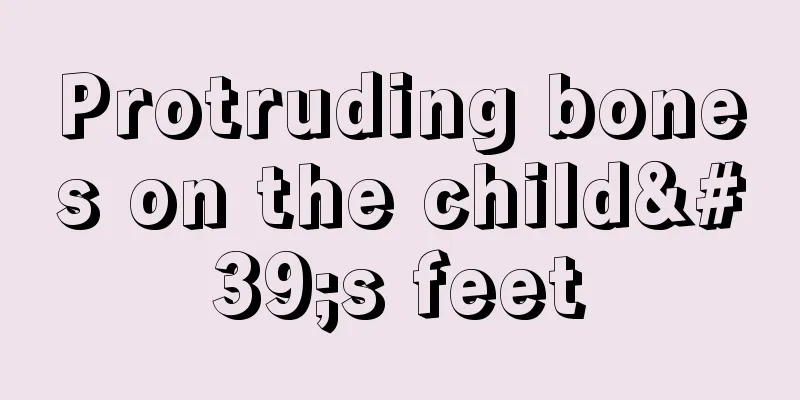What should I do if my child's feet are a little bent?

|
As children grow up, any physical changes will be noticed by parents, who are afraid that their children will have physical problems which will have a big impact on their future. Some parents find that their children's feet are a little bent. There are many reasons for this. Some are deformities, and some are caused by incorrect walking posture. The solution should be based on the reasons. So, what should we do if our child’s feet are a little bent? Let’s take a look at the solution below. Don't be nervous; generally speaking, it's normal for young babies to have bent calves. Because the muscles attached to the long bone on the inside of his calf (tibia) are thinner than those on the outside, the baby's calves appear a little bent, which is actually an illusion. The fetus also has inward-turned toes, which is caused by the fetus being cuddled in the mother's womb for a long time. After the baby is born, his limbs will slowly "stretch out", but some babies are slow to "stretch". When they learn to walk, their toes will bend inward and they will walk unsteadily. At around 1 year old, their legs will be slightly bent, and X-rays will also show bent calf bones, but there are no X-ray manifestations of rickets. This is because the children at this age have just started to walk, and their legs cannot bear their own body weight well, so their calves are temporarily bent. Generally, they will return to normal by the age of 2-3, and X-rays also show that the original bending of the calf bones has been corrected. Both situations are normal. For babies with introversion, the soles of their feet will tilt inward, but there will be basically no problems with their feet and knees. Babies with "duck feet" are less stable when learning to walk and are more likely to fall. If the baby's condition has not improved after the age of 2, the doctor may put a splint on the baby's foot and use a limb brace to correct the foot position, which may take a year. If the condition has not improved by the age of five or six, the doctor will consider performing surgery to loosen the muscles in the child's feet. The so-called abnormal means that the baby suffers from severe rickets. Due to calcium deficiency, the bones become thin and softened. When the child stands or walks, the lower limbs cannot bear weight and the calves become bent. This is what we call "O"-shaped legs and "X"-shaped legs. For children with "O"-shaped legs, the curvature of their legs is more serious than normal. During the examination, the two ankle joints are brought together, and the two knee joints are often separated and cannot be brought together, with a gap of more than 3cm between the two knees. In "X"-shaped legs, the knees are close together but the ankles are not, and the distance between the two ankles is more than 3cm. X-rays show not only bending of the calf bones, but also other characteristic features of rickets. |
<<: The best age for children to check their bone age
>>: What happens if the milk powder is diluted?
Recommend
Causes and treatment of vomiting and fever in children
Having a baby will make every family happy, but h...
The relationship between family type and children's happiness
Children from single-parent or blended families a...
What are the guidelines for resuscitation of neonatal asphyxia?
When hearing the words “Neonatal Asphyxia Resusci...
What kind of exercise can children do to grow taller?
As we all know, our height is determined by innat...
Is it good to use enema for children’s constipation?
Constipation is a disease that generally occurs i...
How to check baby allergies
Because the chance of allergies will increase gre...
What are the reasons why babies have trouble falling asleep?
Baby development is very important and is also an...
Conservative treatment of adenoids hypertrophy in children
Adenoids hypertrophy is a disease that many peopl...
How to tell if your baby is full?
When feeding, you will always find that the baby ...
What is the baby's skin lacking when it is dry?
The condition of the skin has a great impact on a...
What causes the skin on children's feet to peel?
The weather is relatively dry in summer, and the ...
Why is there so much mucus?
We all know that nasal mucus is the excess waste ...
6 month old baby vomits after eating rice cereal
We know that 6-month-old babies need to add a cer...
What kind of clothes should babies wear to keep cool in summer?
In the hot summer, when mothers take their babies...
Why do children love to spit?
Many parents will discipline their children and t...









